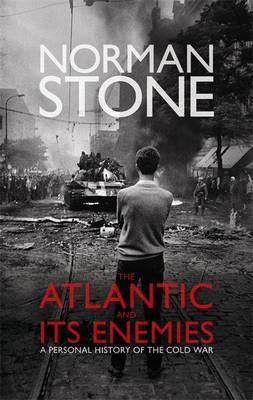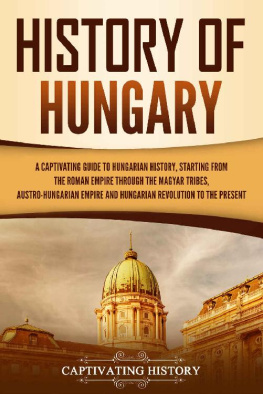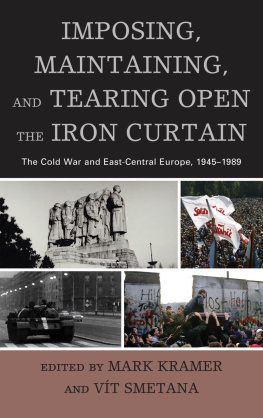HUNGARY
HUNGARY
A SHORT HISTORY
NORMAN STONE

First published in Great Britain in 2019 by
Profile Books Ltd
3 Holford Yard
Bevin Way
London WC1X 9HD
www.profilebooks.com
Copyright Norman Stone 2019
The right of Norman Stone to be identified as the author of this work has been asserted in accordance with the Copyright, Designs and Patents Act 1988.
All rights reserved. Without limiting the rights under copyright reserved above, no part of this publication may be reproduced, stored or introduced into a retrieval system, or transmitted, in any form or by any means (electronic, mechanical, photocopying, recording or otherwise), without the prior written permission of both the copyright owner and the publisher of this book.
All reasonable efforts have been made to obtain copyright permissions where required. Any omissions and errors of attribution are unintentional and will, if notified in writing to the publisher, be corrected in future printings.
A CIP catalogue record for this book is available from the British Library.
ISBN 9781788160506
eISBN 9781782834489
For Anil Seal
Maps and illustrations
Maps
Plates (between pages 142 and 143)




Preface
In the last sixty years Hungary has made world news on three occasions in 1956, 1989 and 2015 and her present Prime Minister, Viktor Orbn, explains this quite simply: the Austrian border. The first two occasions concerned the Soviet Union, whose army had occupied Hungary in 1945 and forced her into the Communist world. The same might have happened to Austria Vienna had also fallen to the Russians but the western Allies had taken most of the country, and in 1955 the Russians withdrew. They recognised Austria as a neutral state, and she began to prosper. The Hungarians would gladly have followed that example, and next year they rebelled, making headlines. For ten days there was an illusion of freedom, but Soviet tanks crushed Budapest. Two hundred thousand Hungarians managed to escape to the west. In 1989 came another headline moment. By then, the Soviet grip had relaxed, and you were not automatically shot or blown up if you went to Austria (although one unfortunate East German somehow provoked a guard and was killed on 21 August). People from other countries of the Soviet bloc could legally go to Hungary, and thousands of East Germans went there on holiday. In 1989 word got out that they would not be stopped if they crossed into Austria. The Hungarian opposition organised a Pan-European picnic, and six hundred people just crossed the border, followed by thousands and thousands in August. The Communist East German state, which had a smell of brown coal, a stupidity of sloganeering and a bullying frontier system all its own, was hopelessly discredited, and the shock to the Communist system was such that the most famous part of the Iron Curtain, the Berlin Wall, was breached, and East Germany collapsed, followed by other Communist states.
These two moments of Austro-Hungarian history had to do with the decline of Communism. But in the summer of 2015 came another headline moment, when hundreds of thousands of refugees or migrants from the Middle East trudged into Hungary, making for the Austrian border. They were doing this because the German Chancellor, Angela Merkel, had invited them. She did not ask the Hungarians opinion. Overwhelmed by (mostly) young men trudging through from Serbia, Viktor Orbn famously put up a razor-wire fence to keep them out until they could be registered. Official Europe howled with rage, and the Austrian Chancellor, according to a Reuters report, likened Orbns refugee policies to Nazi deportations not an obvious comparison. Orbn vigorously defended himself; later on, he said that many places in western Europe had become unrecognisable he could have mentioned Brussels and that in fifteen years time an adolescent born then would ask how this could have happened. No one had voted for it. And he also knew what he was talking about. For Hungary this was a matter of national survival. Her southern border is porous, the countryside flat, an invitation to invasion.
Hungary had already had a Moslem occupation, lasting a century and a half, under the Ottoman Turks. The Turks themselves in modern times have been quite popular in Hungary, for reasons that will be looked into, and in any case, after a good century of westernising reform, are tolerably prosperous, with no compelling reason to migrate. But the back areas of the old Ottoman Empire are on the move North Africa, the Sudan, Syria and Iraq and the Hungarians fear being overwhelmed. Their country is not rich. Being a member of the European Union has not been an unmixed blessing: agriculture has not flourished as it should have done (you can see the difference when you cross the Austrian border), and Austrian banks acquired a reputation for rapacity in dealings with rents and mortgages in Hungary. Freedom of movement in Europe is no doubt a good thing, but it has also meant that more than half a million young Hungarians emigrated, mainly to Austria, Britain and Germany, and the national health system will take time to recover. Viktor Orbn stands up for himself, and now has an international reputation that few leaders of small countries have matched.
The most recent (and best) English-language history of Hungary, by Bryan Cartledge, is called The Will to Survive, and that title sums it up. Hungarys survival is indeed strange. The Magyars their name for themselves descended on Europe as one of several central Asian tribal federations, called hordes (in Turkish, ordu; Hungary comes from On ogur, meaning ten arrows in old Turkish, and may have something to do with Hun), and that is where their language comes from. All other such hordes vanished (or almost: there are remnants, such as the Turkish Gagauz Kara oguz in Moldova and the Hungarian Csng in Rumania) as they assimilated with peoples whom they had subjected: the originally Turkish Bulgars became Orthodox and spoke Slavonic. The Hungarians became Christian, but kept their language, and Hungary became a great state in the Middle Ages. Then, after 1526, she succumbed to German-Austrian Habsburg imperialists and Ottoman Turkish imperialists: for well over a century she was a battleground between two world empires. But she was not cut off from Europe, and joined in European movements: the Reformation in particular. The Turks did not bother with Christian divisions, which they could not understand: they only wanted tribute from non-Moslems, and even discouraged conversion to Islam. This gave Hungary her peculiar character, because the Turks prevented the Habsburgs from carrying through the Catholicising and Germanising programme that they implemented by force elsewhere, especially in the Czech lands, and in the eastern part of the country there was an independent principality, Transylvania, under Turkish protection. It is a spectacular part of the world, a land of forests and high mountains, and if you define Europes borders in terms of Gothic cathedrals, it is indeed on the edge. There Calvinism, with its ferocious devotion to education, survived in strength, the only place in Europe east of Switzerland where this happened. In the nineteenth century Calvinists played a dominant role in the Hungarian revival.
Next page

















